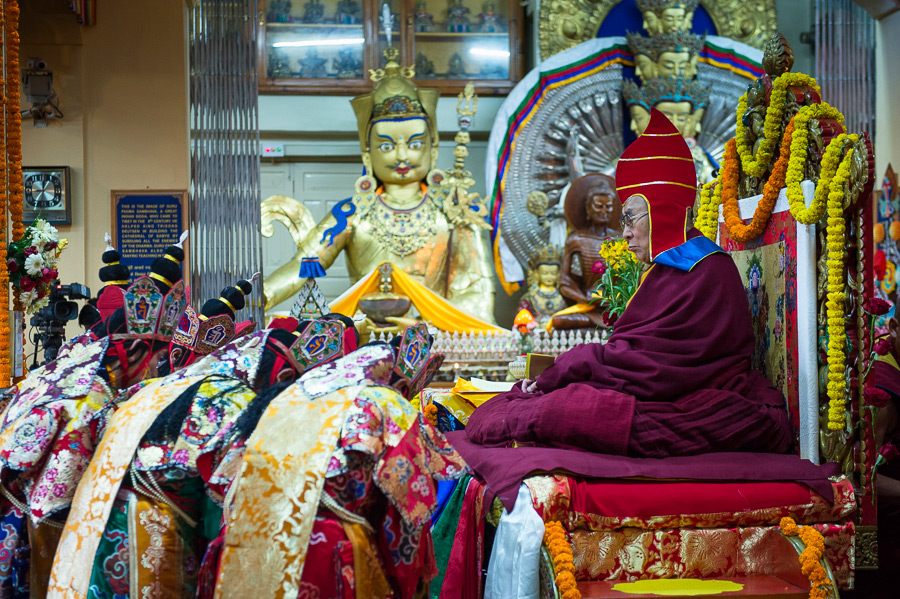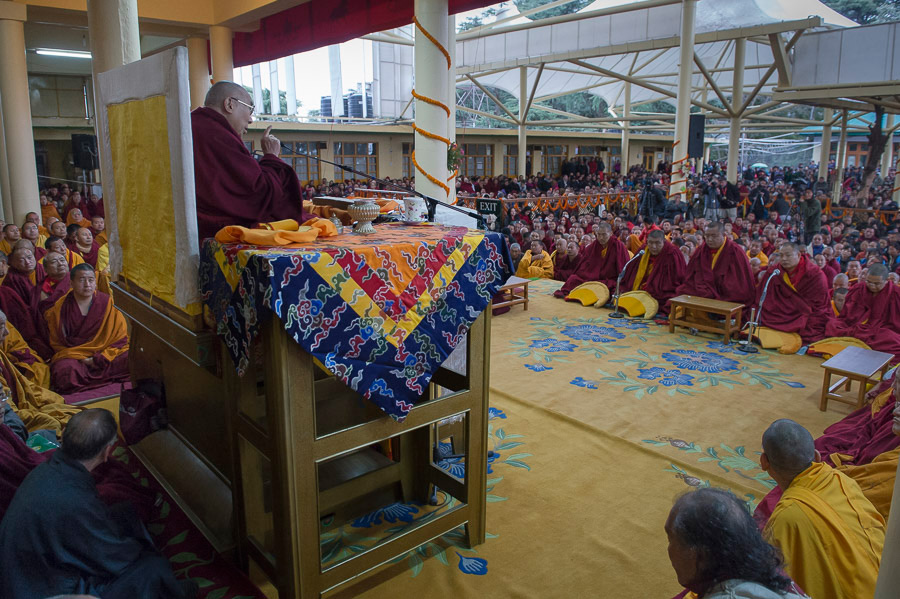The Long-Life Prayer was conferred on His Holiness the Dalai Lama, in celebration of his 80th year, at the Monlam or Great Prayer Festival which falls during the first days of the Tibetan New Year. On the day following the ceremony he gave a short teaching from the Jataka Tales to everybody who had gathered for the Monlam festival.
The long-life prayer, which is associated with Amitayus, the Buddha of longevity, was offered on March 4 to His Holiness by five different Tibetan organisations: the Belgian Tibetan Association, the Tibet United Committee, Representatives of the Lhasa District Long-Life Ceremony Committee, the Lhoka People’s Association and the Dharamshala Business Association. The Amitayus ritual was performed by monks of the Mindrolling and DorjeDrak Monasteries. Afterwards, His Holiness thanked the five organising bodies and said he is in good health and confident to live over a hundred years.
On the following day, the final day of the Great Prayer Festival and one of the most important Tibetan Buddhist celebrations of the year, His Holiness joined the assembled monks and nuns early in the morning for the bi-monthly restoration and purification ceremony. In the courtyard, many lay people – Tibetans and visitors from different parts of the world – waited eagerly.
His Holiness began teaching about Buddha’s life by reading from the Jataka Tales. He mentioned that Buddha is the only teacher who told his students to analyse and examine his teachings and not to follow blindly out of faith. He said all schools of Tibetan Buddhism are based on the Nalanda Tradition, which preaches study through logic and analysis.
His Holiness also mentioned that it is important to have good motivation while reciting prayers and mantras to become a true Buddhist practitioner.“Peace will not come by simply releasing pigeons into the air.” He added that a peaceful society can be possible only if there is peace and harmony within every human being.
Additionally, His Holiness explained that the Great Prayer Festival was established by the Great Master Tsongkhapa in Tibet more than 600 years ago.







 Print
Print Email
Email